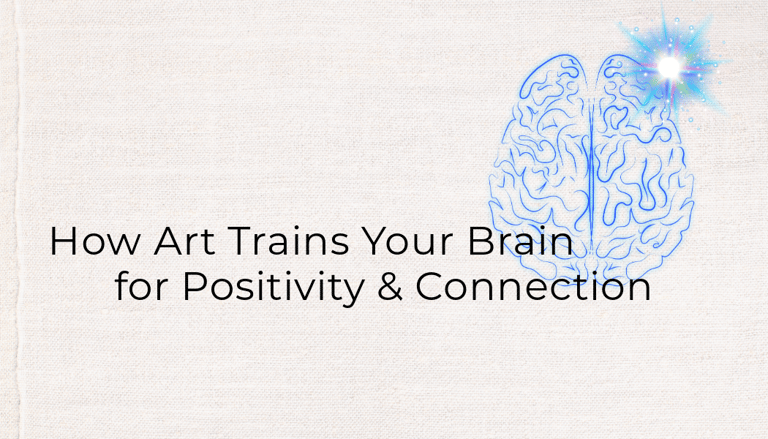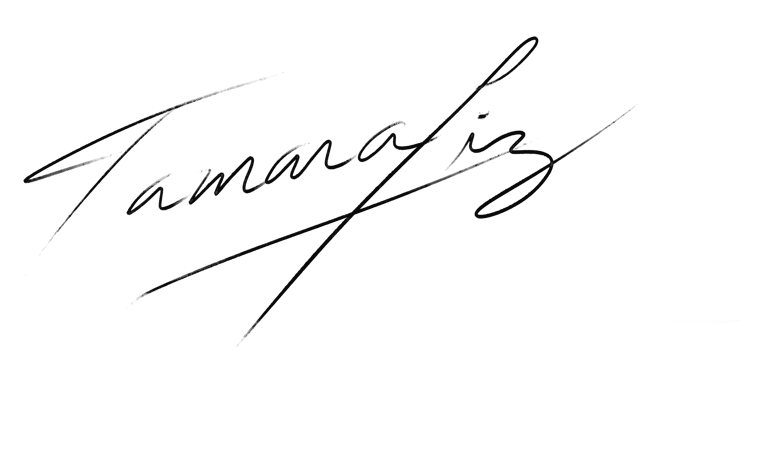How Art Trains Your Brain for Positivity & Connection
Train your Reticular Activating System (RAS) with art and creativity! Learn how artistic expression helps your brain focus on positivity, boost emotional well-being, and strengthen connections through mirror neurons. Try simple exercises to shift your mindset today!
WELLNESS
Tamara Liz
2/14/20253 min read


How Art Trains Your Brain for Positivity & Connection
Ever wonder why some people seem to radiate positive energy, effortlessly noticing the beauty in life while others get stuck in negativity? It’s not just mindset—it’s neuroscience.
Your Reticular Activating System (RAS) is like your brain’s hype squad, deciding what deserves your attention. The catch? It only lets in a tiny fraction of the millions of bits of information your brain processes every second. So, what you focus on—intentionally or not—shapes your reality.
Good news? You can train your RAS to work in your favor. And one of the best ways to do that? Art. 🎨✨
Engaging in creativity—whether through painting, photography, music, or storytelling—doesn’t just make life more beautiful; it literally rewires your brain to prioritize positivity, inspiration, and connection. And when you share those experiences with others, your mirror neurons kick in, amplifying joy, empathy, and emotional bonding.
Ready to Rizz Your RAS and start seeing the world through a more creative, uplifting lens? Let’s dive into the science behind it and how you can use art to train your brain for more joy, focus, and human connection.
Understanding the Reticular Activating System (RAS)
The RAS is a network of neurons in the brainstem that plays a crucial role in regulating wakefulness, attention, and filtering sensory information. It acts as a gatekeeper, deciding which sensory inputs reach our conscious awareness.
Our brains are constantly bombarded with information—our eyes alone can process up to 10 million bits of data per second! However, we can only consciously process a small fraction of that. The RAS helps prioritize information, ensuring we focus on what matters most. By intentionally shaping what we pay attention to, we can train our brains to focus on positivity, creativity, and well-being.
How Art Trains the RAS to Seek Positivity
Engaging in artistic activities directs the RAS to prioritize positive and creative stimuli. Whether through painting, music, or observing beauty in the world around us, we train the RAS to seek out and highlight uplifting aspects of our environment. Over time, this reframes our perspective, making it easier to notice joy, beauty, and inspiration in everyday life.
Practical Exercise: "Capture the Best Part of Your Day"
📸 Daily Photo: Take a photograph of something that brings you joy each day—a blooming flower, a vibrant sunset, or a cherished moment.
💬 Share & Reflect: Show your photo to loved ones and talk about why it was meaningful to you.
🔄 Why It Works: This practice encourages the RAS to focus on positive experiences, fostering a habit of seeking joy. Sharing these moments strengthens social bonds and reinforces positive emotions, creating a ripple effect of gratitude and connection.
The Role of Mirror Neurons in Shared Experiences
Mirror neurons are specialized brain cells that activate both when we perform an action and when we observe someone else performing the same action. This mirroring ability is key to empathy, emotional understanding, and social bonding.
I’ve noticed this firsthand when I unintentionally adopt the accent of the people I’m speaking with—a subtle yet clear example of mirroring in action. Similarly, art activates our mirror neurons, allowing us to internally simulate and experience emotions depicted in an artwork.
How Mirror Neurons Deepen Our Connection to Art
Embodied Experience: When we see a painting of a ballerina in motion, our mirror neurons activate as if we were performing the dance ourselves. This sense of embodied simulation helps us connect emotionally to the dancer’s movements and feelings.
Emotional Resonance: Mirror neurons intensify how we experience art, whether it’s the serenity of a landscape painting, the sorrow in a portrait, or the energy of an abstract piece.
How Art Strengthens Social Bonds & Shared Emotions
Beyond personal experiences, mirror neurons facilitate shared emotional connections. When we express and share our positive experiences—whether through art, storytelling, music, or conversation—we activate these neurons in others, deepening our sense of empathy and human connection.
Art as a Catalyst for Connection: When people experience joy, pain, or hope through shared artistic expression, it fosters a collective emotional response, strengthening social ties and shaping beliefs and values.
Integrating Art into Daily Life
Mindful Observation: Dedicate time to notice and appreciate art in your surroundings—whether in nature, galleries, or everyday life.
Creative Expression: Engage in drawing, painting, photography, or music to stimulate the RAS and train your brain to focus on the positive.
Community Sharing: Join group art projects, discussions, or creative workshops to activate mirror neurons, build empathy, and deepen emotional connections.
Final Thoughts
By incorporating art into our daily routines, we can harness the power of the RAS and mirror neurons to train our minds toward joy, enhance our emotional well-being, and strengthen our connections with others.
🎨 What’s one piece of art (a song, a photo, or a painting) that has made you feel deeply connected? Share online and tag @tamaraliz.art
Explore the world of Tamara Liz.
Contact
becreative@tamaraliz.com
915-258-9049
© 2025. All rights reserved.
